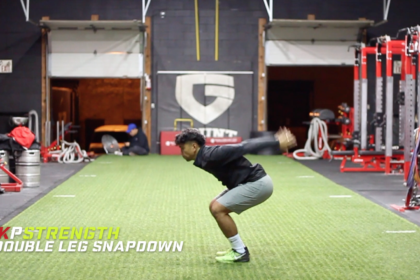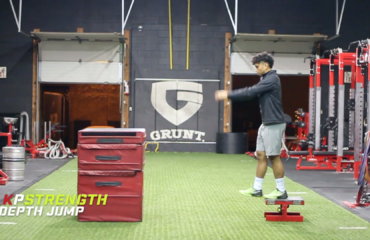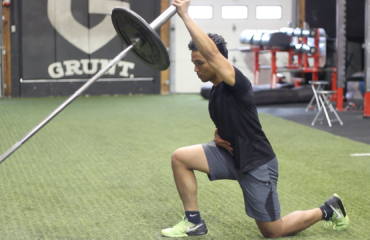How to Jump HIGHER and Run FASTER With These 3 Jump Progressions

1. JUMP LANDING PROGRESSION
There are so many videos out there showcasing how high some athletes can jump. Raising the height of the object WILL NOT make you jump higher. Most of the time, how high your feet goes doesn’t necessarily mean it’s a good indicator of how high you jump, it just means your flexible. But before thinking about jumping high, it’s very important to have good landing mechanics.
The ability to land effectively and absorb force will decrease the likeliness of non-contact injury, and improve an athletes efficiency in decelerating.
Here’s how to do a Snapdown:
1. Stand on your tippy-toes
2. Raise your arm overhead
3. Quickly drive your arms back
4. Snap to a good athletic position
2. VERTICAL JUMP PROGRESSION
Now that you’ve mastered how to land safely and efficiently, it’s time to actually start jumping. Again, the focus is not how high you can clear a box but how well you can fully extend and absorb force. There are many variations to progressing a vertical jump and here’s how I would teach the progression.
Note: Make sure that you get full extension in your ankles, knees, and hips. Swing the arms to gain momentum in your jump. When landing, focus on being stable in your athletic position.
1. Double-leg vertical jump w/ stick landing
2. Single-leg vert w/ stick landing
3. Double-leg box jump
4. Single-leg box jump
5. Double-leg depth box jump
6. Single-leg depth box jump
3. HORIZONTAL JUMP PROGRESSION
Explosive power horizontally is equally important to vertical power. Improvement to horizontal power can give an athlete a quicker first step and faster acceleration when running, sprinting, or even skating.
Here’s my horizontal jump progressions:
1. Broad jump w/ stick
2. Broad jump x2
3. Single-leg bound
4. Single-leg bound x2
5. Depth broad jump



